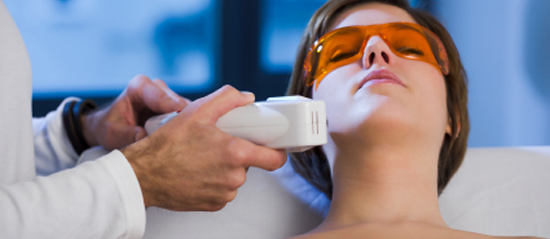Symptoms

Acne
What is juvenile or simply common ACNE?
Technically called “acne vulgaris”, this skin disease affects millions of individuals annually. It can vary from quite mild to more severe. Acne usually develops when the sebaceous glands and the lining of the hair follicle begin to work overtime, as they do in adolescence. Normally, the lining of the hair follicle sheds cells that are carried to the surface of the skin by the sebum. When the follicle is overworked and clogged, cells and sebum accumulate, forming a plug (comedo). If the plug stays below the surface of the skin, it is called a "closed" comedo or whitehead. If the plug enlarges and pops out of the duct, it is called an "open" comedo or blackhead because the top is dark. This is not dirt and will not wash away. The discoloration is due to the way light is absorbed by the skin cells within the opening.
Causes and Risk Factors of Acne
About 80 percent of all teenagers develop acne, but this disease can also begin as late as the ages 25 or 30, particularly for women. No one is certain as to what exactly causes acne or why it usually begins in adolescence, but hormones, primarily testosterone, certainly play a large role.
Symptoms of Acne
There are two main types of acne: non-inflammatory and inflammatory.
In non-inflammatory acne, there are usually just a few whiteheads and blackheads on the face. A relatively mild type of acne, it can often be treated effectively. The majority of people with acne have this type of acne.
With inflammatory acne, the whiteheads become inflamed and red pimples and pustules develop.
Facts about acne:
Research has shown that a lack of linoleic acid in the skin tissue is one of the principal causes of the proliferation of the bacteria that causes acne. Pitting lesions may leave scars on the skin. Over and above, if you scratch, pick or squeeze at the lesions, this will promote the propagation of the bacteria “Acnis Propiones” which in turn may worsen inflammation and scarring.
How do we treat acne?
As with most diseases, acne responds best if treatment is begun early in the course of the disease. Treating your acne before it becomes severe may also help to reduce permanent scarring.
Many treatments are available depending on the gravity and the final result you wish to achieve.
The Sylvia Pizzi SPA offers a series of different treatment that may meet your needs.
If your acne is very active, you might consider visit a dermatologist for antibiotic or Accutane treatment. Because those treatments are very strong and impacting on your health, we might try different alternatives before.
First, the new oxygen therapy from Switzerland will clear your skin like wonders by infusing pure medical grade oxygen via our exclusive O2 oxygen machine.
Also, one treatment program called “SKIN TX” will help reduce the frequency and severity of acne breakouts and prevent the formation of blackheads and whiteheads.
Another possible treatment option is Pulsed-Light Photorejuvenation. This treatment is directed at the bacteria responsible for the evolution of acne. In just a few treatments, your skin will be revitalized progressively.
The Sylvia Pizzi SPA offers you a fast and safe Glycolic Acid Treatment to instantly illuminate your skin tone. For many years chemical peeling has been used to restore smoothness to the skin by applying a solution of 40% glycolic acid to dissolve the dead cells on the topmost layer. This also stimulates the rejuvenation of collagen cells and increases the skin’s elastin fiber density.
And finally how to target aging skin (age 25 and up) that is still subjected to blemishes.
Such skin conditions have specific and essential needs:
- To control hypersecretion
- To treat inflammation
- To hydrate the skin
- To protect from environmental factors
- To regulate the keratinisation process
- To give an antibacterial effect on the cutaneous flora
- To prevent premature aging of the skin




